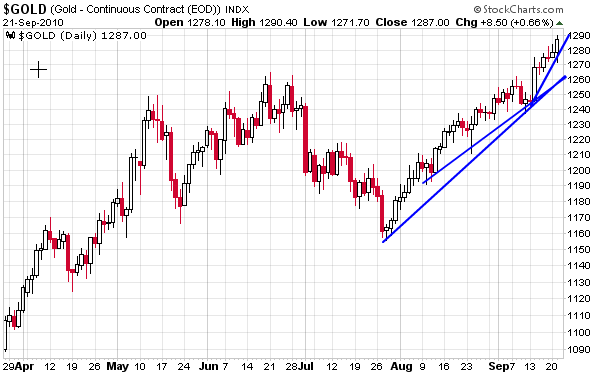I notice that the Banker’s Acceptances have dropped (implying future rate increases) over the past week. Current quotations are as follows:
| Month / Strike | Bid Price | Ask Price | Settl. Price | Net Change | Vol. |
| + 10 OC | 0.000 | 0.000 | 98.640 | 0.000 | 0 |
| + 10 NO | 0.000 | 0.000 | 98.630 | 0.000 | 0 |
| + 10 DE | 98.615 | 98.620 | 98.650 | -0.030 | 12401 |
| + 11 MR | 98.450 | 98.460 | 98.520 | -0.060 | 21511 |
| + 11 JN | 98.380 | 98.390 | 98.450 | -0.070 | 6701 |
| + 11 SE | 98.310 | 98.320 | 98.380 | -0.060 | 2617 |
| + 11 DE | 98.250 | 98.260 | 98.310 | -0.050 | 1526 |
| + 12 MR | 98.190 | 98.220 | 98.240 | -0.040 | 99 |
| + 12 JN | 98.090 | 98.130 | 98.150 | -0.030 | 7 |
Look at the December contract – implied pricing of 1.39%. On September 8th, this was 1.14%.
Three-month corporate paper is currently trading at 1.14%, which implies that we could be seeing one more rate hike (of 0.25%) before year’s end. The next Bank of Canada scheduled rate announcements are October 19 and December 7.
